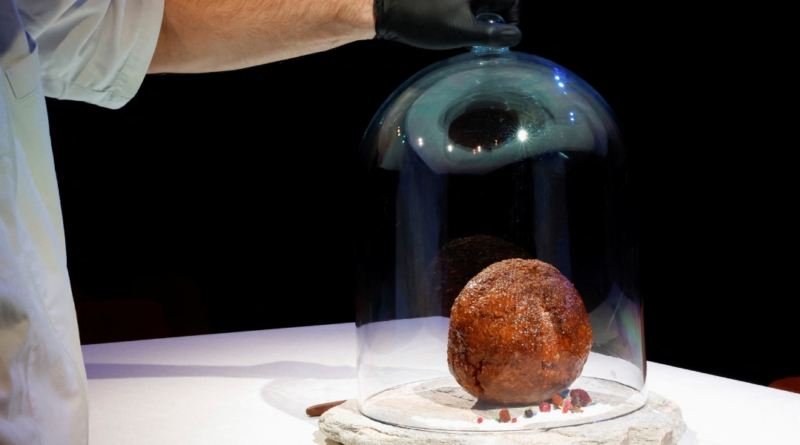Scientists have created a meatball made from a genetically-engineered mammoth—but no one is allowed to eat it
You’ve probably heard of scientists experimenting with lab-grown meat these days. But what about an extinct prehistoric animal that no one has seen for thousands of years?
Earlier this week, Australian cultured meat company Vow unveiled a meatball made of wooly mammoth meat and grown entirely in a lab. But there’s a catch—no one can eat it just yet.
“This is not an April Fools joke,” Tim Noakesmith, founder of Vow, told the Associated Press. “This is a real innovation.” The meatball is currently on display at a science museum in the Netherlands, Rijksmuseum Boerhaave.
Vow used existing information about the genetic sequencing of a mammoth, which included a key protein that gives the meat its taste, and filled in the blanks based on data from similar species (like the African elephant). The company then inserted those genes into sheep cells, and let the cells multiply until they reached a meatball-sized amount.
Vow also produces lab-grown quail, but has not sold it to the public. Other companies have created cultured meat like chicken and proven that it’s safe for consumption.
“Normally, we would taste our products and play around with them. But we were hesitant to immediately try and taste because we’re talking about a protein that hasn’t existed for 5,000 years,” James Ryall, the chief scientific officer at Vow, told CNN Tuesday. “It’s not going to go up for sale, because we’ve got no idea about the safety profile of this particular product.”
Vow did not immediately return Fortune’s request for comment.
So, if the meatball isn’t going to make it into restaurant menus or supermarkets, why bother creating them? Vow says there’s a broader message behind creating a mammoth meatball: to invest in the future of food.
As climate change and food shortages threaten the global food supply, Vow touts lab-grown meat as the future. Cultured meat demands fewer resources like land and water to manufacture, and advocates say it could reduce the risks of pollution and climate change.
“We need to start rethinking how we get our food. My biggest hope for this project is … that a lot more people across the world begin to hear about cultured meat,” James Ryall, the chief scientific officer at Vow, told CNN.
Noakesmith told the AP that it chose to replicate the meat of a woolly mammoth because it has been “traditionally a symbol of loss. We know now that it died from climate change. And so what we wanted to do was see if we could create something that was a symbol of a more exciting future that’s not only better for us, but also better for the planet.”
Plant-based meat brands like Beyond Meat and Impossible Foods have made a splash over the last few years for their faux-meat burger patties and chicken nuggets. But only a handful of companies currently specialize in lab-grown meat made from real animal cells, and only one country—Singapore—has legally allowed its consumption. In late 2022, the U.S. Food and Drug Administration said that lab-grown chicken was safe for consumption in a landmark move for the mock-meat industry.



